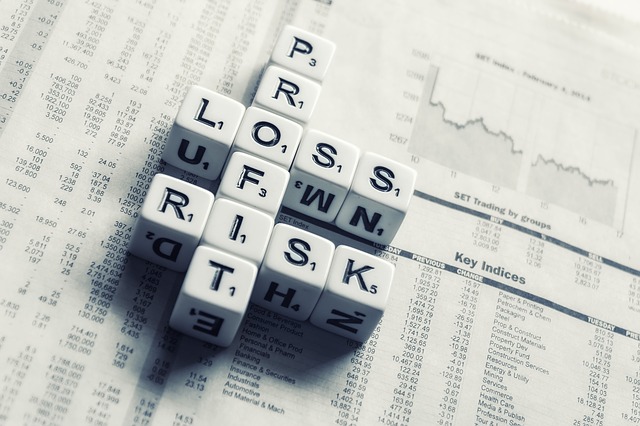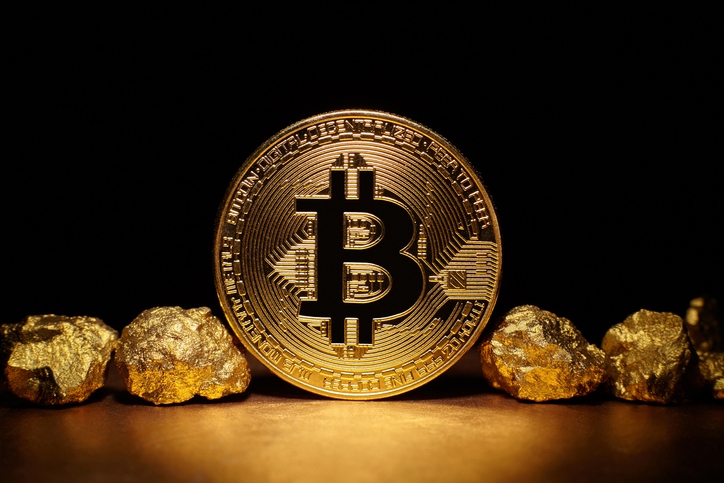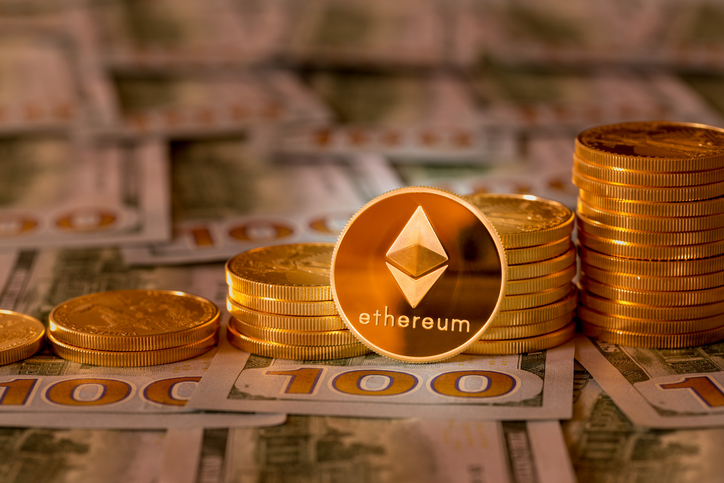My father always used to say to me,
What’s the worst that can happen, and are you prepared for it? What is your plan?
I’ve always been a big outdoorsman, and I’m an engineer by profession. Thinking “what’s the worst that can happen, and are you prepared for it?” is how I live my entire life. What it’s really talking about is risk mitigation, and the importance of having a solid plan.
Risk is inherent in every aspect of life. You risk your life every time you get in a car (car accident), walk down the sidewalk (getting hit in the head with a meteor), and visit the gas station (freak gasoline accident such as the one depicted in Zoolander). I make just about every decision in my personal and professional life with these concerns in mind. I also invest with a risk-informed decision-making process, and if you aren’t already doing the same, you should start.
Start by asking and answering 3 fundamental questions:
- What is the probability of that event occurring? (Meteor on head versus, say, a fender bender, kid getting sick, or your spouse losing their job)
- What is the consequence of that event happening, and what would be your mitigating actions based on the consequence of that event? (Wearing meteor-resistant helmet, having health insurance, or having some money saved up and accessible)
- Do the possible mitigating actions that you could take make a difference, based on the nature of the event and the way it will play out? Sometimes the mitigating actions wouldn’t even help in the big picture of things. Sometimes the actions themselves will expose you to new risks.
Once you ask and answer all those questions, you can decide if an event is worth being prepared for and having a plan to mitigate it. Failure to ask those questions — especially the last one — is what leads survivalist-minded folks to prepare for some silly things like nuclear winter, a rampant viral outbreak, or the zombie apocalypse.
For example, me personally, am I prepared for a meteor impact or massive nuclear detonation? Not really. Should I build an underground bunker to mitigate against those events? Not really. This falls into the category of “do my mitigating actions even matter?”
If a nuke was detonated close enough to me that the bunker would be my only chance of survival, then I probably wouldn’t be able to exit the bunker within my lifetime (let alone before I run out of food), so what’s the point?
However, can I mitigate against a 10-day snowstorm that prevents me from buying food? Sure. Can I mitigate against my wife and me losing our jobs? Sure. Can I mitigate against the cryptocurrency market crashing? Sure. So let’s do those things first. Once we’re set, then we can look at making an underground fortress.
In order to formulate a plan on how we are going to spent an asset (time, money, etc.), we need to think about risk.
Always think, what is the probability of occurrence of the event? What are the consequences? Multiply those 2 numbers together, and that’s your risk. Now, based on your risk, develop mitigating actions. Now assess the mitigating actions for effectiveness and exposure to new risk. Take this method and apply it to everything in your life. It sounds onerous, but once you get used to doing it, it can be done very quickly.

Portfolio Balance and Formulating Your Investment Plan
A great post was made recently on Reddit that discusses one of the biggest risks in cryptocurrency today: Tether. If you haven’t read that piece yet, it’s probably a good idea to give it a browse at some point.
I’m going to use Tether as an example of investing with a risk-based mindset. How are we going to adjust our portfolio accordingly? Let’s look at the fundamental 3 questions:
- What is the probability of the event occurring?
- What are mitigating actions you can take, should that event occur?
- Do the mitigating actions even matter?
What Is the Probability of the Event Occurring?
Without a crystal ball, it’s impossible to tell. This means you’re going to have to apply some subjectivity to this one. A lot of people think that a Tether collapse is inevitable, but we can do a lot better than wallowing in doom and gloom. Let me give you some things to consider before you resign yourself to this event happening.
Firstly, there’s a non-zero probability that each USDT is actually in fact backed by $1 USD. It may be a long shot, in your opinion, but it is still possible.
Secondly, there are many projects being started that aim to decentralize the “stable coin” market — thus reducing the market’s exposure to a Tether collapse — and some of them are aiming to be ready as soon as March 2018.
Two projects that look very legitimate are Jibrel Market and MakerDAO. Just a word of warning: there are also some other projects that claim to back their coin with gold, but you should be very critical of these. Most claim to hold 2 billion USD or more worth of gold — without any third-party audit proof of that fact, and with no plan of ever performing a third-party audit.
In contrast, while it may still be too early to definitively say, projects like MakerDAO, DAI, and the stable fund appear to be tackling the problem from the right angle, such as integrating third-party audits into their blockchain for transparency. As always, do your own research before you buy anything. Regardless, it’s quite possible that even if Tether collapses, another option will be already available.
Thirdly, there is some inherent stability being formed in the crypto market, especially after the recent January pullback. I discussed the future stability of cryptocurrency in a previous article, but to quickly summarize my point of view, new investors are coming in and holding for long-term gains. They are replacing early adopters who got out with their profits. Every day the crypto market gets more stable.

At the same time, many online merchants accept Bitcoin, but other coins more suitable to fast transactions are becoming more widely accepted. As the digital currencies come to be used as actual currency, we will become less reliant on a “stable coin” such as Tether. Some of that stability will shift to a widely adopted “currency coin.” One coin that has the potential to capture this market is Nano.
Nano is currently my personal pick for the coin that will stabilize crypto in the future, simply because I believe it has the most potential to be widely used as an actual currency. I will discuss Nano a little more later.
So, using your own personal crystal ball, try to estimate the probability of a Tether collapse, but adjust it by the probability that it will impact the entire crypto market, considering the factors above. Now you can calculate your approximate risk (risk = probability x consequences). The consequence, of course, is you lose most of your current cryptocurrency valuation.
What Are the Mitigating Actions Based on the Consequences of the Event Occurring?
We have identified a risk, we have estimated our own personal probability of occurrence, and we have quantified the consequence. Now let’s formulate a mitigation strategy. How do you mitigate against a crypto market collapse caused by a Tether collapse?
If you think the Tether collapse is highly probable and unmitigated by other factors such as those above, you could always simply exit to fiat and wait for it all to blow over, then buy back in on the subsequent dip.
The drawback to this plan is obvious: you could miss out if a Tether collapse never actually materializes.
Alternatively, you can sell some position in crypto back to fiat itself instead of Tether, on any exchange that has fiat pairs.
If you suspect a crypto collapse caused by a Tether collapse is imminent, having a cache of fiat ready to jump into the market is another way to mitigate the risk. Just make sure whatever exchange you choose is insured, or else you are simply trading Tether risk for custodial risk.
The last option would be to diversify your investments in order to hedge against a Tether collapse. This is the one I utilize, so I will expand on how I actually do this below. The reason I prefer this option is that it not only shelters me from a Tether collapse, it also is the exact same mitigating action to protect against any other collapse that could cause a market-wide crypto fall. It protects me from some risks I haven’t even considered. This multi-stacking risk mitigation is ideal. But more than that, I believe in crypto long-term, so watching from the sidelines as the market takes off is a risk I’m not willing to take.
Do the Mitigating Actions Even Matter?
Now the important question: do your mitigating actions even matter? Is it even worth considering a Tether collapse?
Let’s investigate this while considering the mitigating plans of keeping our inventory on an exchange (whether that is crypto assets or fiat) and trying to time our exit for when the crash happens.
Holding our crypto assets on the exchanges seems like a poor option to me. Looking at previous collapses, such as MTGOX and Bitfinex BTC loss, the majority of the market reaction happened almost instantly, within roughly 15 minutes. I have very little confidence that I can execute an exit strategy in this time frame, and this also introduces me to substantial other risk factors, such as custodial risk (trusting the exchange to hold my assets and remain solvent).
So to me, that’s simply not an option. It’s unlikely that I would be able to exit fast enough, and even if I did, I expose myself to a new daily risk of the exchanges losing all my money. I prefer to hold my crypto in cold storage.

Developing an Investment Strategy Based on the Assessed Risks
Since I don’t plan on exiting cryptocurrency any time soon, all I can do is minimize my exposure to this risk through diversification. This mitigation strategy has the added benefit of hedging against other risks, such as government bans or any other negative global sentiment change.
I personally invest as follows:
- 60-70% investments in “core” safe bets
- 20-30% in riskier but higher-reward bets
- 10% in high-risk, high-reward bets
Figure out where you want to be and tweak those numbers, but make sure you have targets. Have a plan.
Before crypto existed, my 10% risky bets were long-shot tech stocks such as 3D printing, exoskeleton enhancements, genetic modification, etc. Things that, if they took off, could be massive. Ever since I got exposed to crypto, I have tweaked those numbers a bit, and I’ve decided to put my entire 10% risky investment portfolio into it. I’ve also bumped it up to about 15%, as I have become more and more convinced that it’s not as “risky” as I initially evaluated it.
The rest of my portfolio is still in “safe core” investments such as bonds, blue-chip stocks, real-estate holdings, and food (personal food security, such as planting fruit trees, berry bushes, and perennial edibles that reduce my family’s grocery bills and also help save the planet, the bees, topsoil, and reduce our carbon footprint). Never forget — a penny saved is a penny earned.
To break it down, the largest proportion of my investments is currently in real estate (this can be as simple as purchasing a plot of land and letting it sit fallow). My second largest investment is in the stock market. For transparency, my stock holdings are some robotics stocks (Rockwell and Cognex), medical (Bluebird Bio, Editas, CRH medical), lasers (Coherent/IPG), energy storage (Energous wireless energy storage, WATT), computers (Nvidia), banking (TD, Royal), and blue chip (Apple, Microsoft, Disney, QQQ fund, etc.). My third largest investment is in food security (trees, berries, and land remediation) and energy security (solar panels).
The high-risk portion of my portfolio is entirely in cryptocurrency.
Taking That Approach and Replicating It to My Cryptocurrency Portion
For my 10-15% risky investment (crypto allocation), I like to use the exact same model: 60-70% core, 20-30% medium risk, and 10% high risk long shots. I will mention my holdings in a minute, and I plan to do a deeper dive on each one of them in a future article and discuss why I hold them.
First I need to decide what crypto assets I should consider as my “core” holdings. In order to do that, I need to talk about shovels.

Sell Shovels in a Gold Rush
In the gold rush, while it was hit or miss for most prospectors, the most successful strategy was actually to sell shovels and pickaxes to the miners. I personally believe the cryptocurrency gold rush hasn’t even begun yet.
Over the next decade, it is my belief that the people who will make out the best will be the ones who sell the shovels, i.e., who provide the tools to the users of this system. This will be especially true for the next few years, so my core strategy is going to focus on selling shovels to the miners (one of the reasons I hold Nvidia stock).
How to execute on this is another question. I may not be able to make the proverbial shovel itself, since that’s not in my skill set. However, I can invest in the companies that are performing those functions.
So Who Is Making the Shovels?
In my opinion, the shovel makers are the platforms, exchanges, and transfer-cryptocurrencies.
Platforms are going to be the foundation that just about every blockchain technology is going to be built upon. They will be the tools that the distributed apps themselves will be created on top of, platforms like Ethereum, NEO, Cardano, EOS, etc.
Exchanges are the tools that investors will use to gain access to this investment space. For now we are forced to use centralized exchanges, and I don’t see that changing for a while. However, timing the move out of exchange holdings, when I see decentralized exchanges taking off, is worth keeping your eye on. Regarding exchanges, I currently hold Binance coin (BNB), Kucoin Shares (KCS), and COSS coin (COSS).
Transfer-cryptocurrencies are anything that is fast and cheap. These are a tool used to quickly move money from exchange to exchange and take advantage of arbitrage, or to eventually cash out and take profits in order to minimize transfer costs on large sums of money. Examples would be Nano (NANO), Stellar Lumens (XLM), Ripple (XRP), IOTA (MIOTA), Litecoin (LTC), Bitcoin Cash (BCH), Xtrabytes (XBY), etc. Competition in this space is fierce, and my personal opinion is that the only one I like in that group is Nano, and to a lesser extent IOTA and XBY.
Since this space is still up in the air, very speculative, and with a lot of competition, I do not allocate any of my core investments to this area. I also shy away from heavily pre-mined coins, such as XLM and XRP, as there is great risk in selloffs by the main holders dumping the price before I can react. The same goes for older tech coins, which rely on off-blockchain solutions to solve their scaling issues, as well as coins that I do not believe have the potential to compete with Visa for monetary transactions. I always look to stack functions, so my inter-exchange transfer coin should also be able to compete with Visa in the monetary exchange market. For that reason, I keep away from the Bitcoin forks. This leaves Nano, IOTA, and Xtrabytes – and my money is currently on Nano.
As I stated, though, since there is so much unknown in this space, I consider these medium-to-high-risk investments, and will allocate only that portion of my crypto pot to them.
Core Holdings
My “core” represents holdings that I can buy and forget about and be very confident in their long-term value. My core is composed entirely of platform plays. Right now, exchanges and transfer currencies aren’t established enough, in my opinion, and there isn’t a single coin that is a slam dunk in those areas. I still have coins representing those aspects, but they aren’t in my “core.” My core is 100% platform plays because I believe this is the safest bet for 2018.
This year a lot of new money jumped into the market and bought up many different ICOs. When the pullback happened, the weak money ran away scared. However, the money invested has already funded many startups and new tech ICOs. These new startups are going to form the genesis of a larger global adoption of blockchain technology. Many blockchain startups now have the funding they need to proceed with developing their products. This is exactly what crypto needs to survive long-term — real-world use cases and working applications.
When the general public sees companies that actively use blockchain technology start to displace “old world” companies, that’s when we will see massive global adoption really take off. It takes real use cases for old stock money to enter the new crypto world.
So why not invest in a bunch of altcoins that could “moon”? It’s going to be nearly impossible to nail down which dapps take off, but what won’t be as hard is to assess which platforms they will run off of. I still plan on investing in some long-shot plays, but not as part of my core holdings.
The platform plays I am taking are going to be ones with rock-solid teams, active Githubs, professional social media, and a history. For me, there is a slam dunk answer to this one, and it’s not very flashy: Ethereum.

I think Ethereum is the safest long-term play going forward. It has first-to-market advantage. It has many working products on it already. Hell, it’s processing more transactions than all other coins combined (which includes Bitcoin). Ethereum is battle tested and hardened. The sky is the limit for this bad boy, and considering my long-term investment approach, I want ¾ of my core holdings portion to be Ethereum.
Even with its current market cap, I believe it is vastly undervalued. It has handled the recent pullbacks quite well, in some stages actually gaining value while the market crashed all around it. This is a big indicator that big money is supporting while the weak hands scatter. I personally believe a lot of the world (big money or not) is currently using Ethereum as one of their core plays. Combined with my doubts about Bitcoin in the future (even with SegWit and Lightning Network), I think there’s no safer play than Ethereum.
My second core holding (the remaining ¼ of my 60% core allocation) is in NEO, for many of the same reasons as Ethereum.
NEO has an extremely solid team, a very active Github, a thought-out roadmap, and they are meeting milestones. NEO also pays a dividend just for holding it (GAS), on an asset that itself is gaining value. NEO also offers more flexibility to programmers, being able to code in many languages, not just solidity. It also offers greater transaction speeds than Ethereum (without Plasma tech), and so should scale well. It is currently relatively centralized in order to control power in this development phase, but has no plans to remain as such. Moreover, it’s making constant advancements in decentralizing, but is doing so in a slow and controlled manner.
However, despite all those exciting aspects of NEO, the reason I’m in holding it, and more so consider it “core”, is only partly because of any of those reasons. I am holding NEO because of China.
East Asian countries tend to back their own products, and at the moment China is experiencing its industrial revolution. They’re currently building power plants like no other nation on the planet. They are aggressively trying to assert themselves as an economic and political power player on a global scale. Currently they have concerns with crypto and keeping Chinese money in China, and this is the general reason for their oppositional stance on cryptocurrency up to this point.
However, if you think China is going to miss out on the worldwide cryptocurrency revolution, no dice. NEO is fully aware that crypto is a political hot potato in China. NEO’s goal is to bring crypto to China, and do it in a way that plays by the rules laid out by the Chinese government. They aren’t planning on fighting a war against the government; rather, they want to bring crypto to China in a way that the government will support.
I have since moved NEO from my medium-risk plays section of my portfolio into my main core holdings, simply because they are going to try to play nice, and that is extremely important in capturing this market. NEO is like ETH in terms of being a no-brainer long-term play, in my humble opinion. It has also been extremely resistant to market dumps in January, signaling that a lot of people put faith in NEO even if their confidence in crypto wavers.
This is exactly what I want in my core holdings. Something I buy and tuck away in a sock under my bed and forget about it until the day I sell it.

Medium-Risk Holdings
The coins making up my medium risk holdings are Nano (NANO), OmiseGo (OMG), Icon (ICX), 0x (ZRX), VeChain (VEN), and Waltonchain (WTC).
These coins make up 20-30% of my holdings, and they vary in % holdings as I buy in. Since my philosophy is one of buying and holding, I don’t sell on dips. So how I adjust this portfolio is that I let my buy-in money pool up and time the buy-in on a perceived dip. When I buy, I pick up whatever of those I feel is the most undervalued at the time, based on price history, recent news, upcoming roadmap and expected announcements, etc.
If one of them pumps and I hit a sell target that I have made, I will then sell some off and take its profits to fuel a better position in another medium-risk category coin that I feel has a better chance to pump going further.
This has led me to a heavier position in ICX, OMG, and NANO, as I believe they are the most undervalued of those. I will briefly talk about each one so that you have a quick idea of what they are.
OMG isn’t simply trying to back currency and payment transactions, but even things such as updating a driver’s license on the blockchain. It’s scope is ALL transactions. It is developing a white-label wallet SDK (software development kit) which will act as a tool that any company (for example, McDonalds, an OMG partner) can code and run a rewards program off of. The possibilities are endless, their scope is massive, and their team is impressive. It is currently extremely undervalued with some big developments on the short-term horizon. There may not be much more time to pick these up at today’s prices.
Icon hit $12 at its peak, and even then I considered it to be undervalued. ICX has impressive partnerships, similar to VeChain (which I also regard highly), but has not bounced back as VEN has. It also shares the close partnership with a state government that NEO has going for it, but for ICX it’s cozying up to South Korea, who have recently made very bullish statements on their support for crypto. Icon is definitely a coin to watch out for.
Nano is a severely underrated coin that has experienced unrelenting negative press for issues unrelated to the coin and tech itself. Some examples are the Bitgrail running an entire exchange off a single node (quite impressive actually), various exchanges locking withdrawals due to its unique tech, and the recent The Bomber (Francesco Firano) scam.
None of these issues have anything to do with the Nano tech itself or its DAG (Direct Acyclic Graph) consensus model, which is what allows Nano to run so quickly and without miners. Nano doesn’t come without concerns, though, such as large, scalable security and node incentives. But the potential to compete with Visa and save companies massive amounts of money in transaction fees and time delays on receiving payments is all the incentive these companies will need to host a node or two. I think the sky’s the limit for Nano, and it’s one coin that I actually believe has the (long-shot, i.e. a decade or more) potential to be a #1 rank overall coin, surpassing Ethereum, Bitcoin, and everything else.
Will that happen? Perhaps not, but could it happen? I personally think it is possible. At its current price of sub $10 and roughly $1B market cap, this thing doesn’t need to move much for it to be an outstanding investment. Visa market cap, for example, is roughly 270 billion USD. How much of that can Nano compete for? I will let you decide that.
High-Risk, High-Reward Holdings
These are coins that I believe have the potential to be valued at a much higher rate than they currently are, and each one may have very different reasons for that opinion.
They are Kyber Network (KNC), Coss Coin (COSS), Cindicator (CND), Quantstamp (QSP), Enigma (ENG), and Singularity.Net (AGI).
Kyber network is a decentralized on-chain protocol that allows the exchange of digital assets. The kyber token will act as payment to use the system and will be subsequently burnt, raising the value of all remaining tokens. Buying a few kyber tokens today could pay massively in the future, and I see the future to be in decentralized exchanges.
COSS is another crypto market exchange, with the idea of splitting fees 50/50 with COSS coin holders. The question is how much volume will COSS exchange handle? It could be worth throwing a few bucks at.
Cindicator is a market prediction platform which polls “analysts” and makes predictions based on the results. This group-think technology can be eerily accurate, and December results showed an alarming 72% accuracy. The token itself is what gives access to the information via several “packages” based on your coin holdings, and this is where the coin economics come in.
Enigma and Quantstamp both seek to work on blockchain security, whether that is encryption, privacy, or validating smart contracts on the chain. Both have great teams and are worth looking into, and the functionality that these coins offer is going to be very useful in the future. These are projects that will possibly work in the background of all transactions, if and when blockchain technology takes off and becomes widely adopted.
Singularity.net is a protocol that seeks to solve modern age issues around artificial intelligence, namely how segmented and fragmented it is in all its applications. The idea is to make artificial intelligence (AI) more accessible to the global market. Token holders receive additional AGI by backing good technology agents and receive returns from the curation reward pool. There is a diminishing returns formula that rewards early investors. Again, it could be worth taking a long shot on and throwing some saved coffee money at. Skip that Starbucks for a month and grow your crypto fund (and hence the 10% allotment for long shots like this).
Conclusion
As with anything in life, you should be making decisions from an informed position. For investments, consider making a spreadsheet and identify various risks to your investment, quantify them (risk = probability x consequence), and then develop mitigating plans that stack functions on risks they mitigate.
Allocate portions of your investments into various areas and stick to them. Every now and then assess your assets for their applicability and appropriateness in each category, and adjust holding ratios of those assets accordingly.
Assess the market for what projects you feel are solid long-term holds with lower risk (relatively speaking), and assign those into your core holdings, where you allow for a more sizable allotment of your portfolio.
Keep long-shot, high-risk holdings to a minimum, but be sure to set aside some money for them. Control your exposure by reducing the allotment to those assets, but make sure your plan accounts for the potential to capture some explosive growth that these can provide. As always, look for solid fundamentals, even in your long shots.
Hopefully the discussion of a few assets that I personally hold will get you started and maybe give you exposure to some projects you didn’t previously know existed, and what portion of your overall portfolio you should allocate to them.
Keep an eye out for investments that have long-term potential. After all, we are all in it for the long haul, right?

